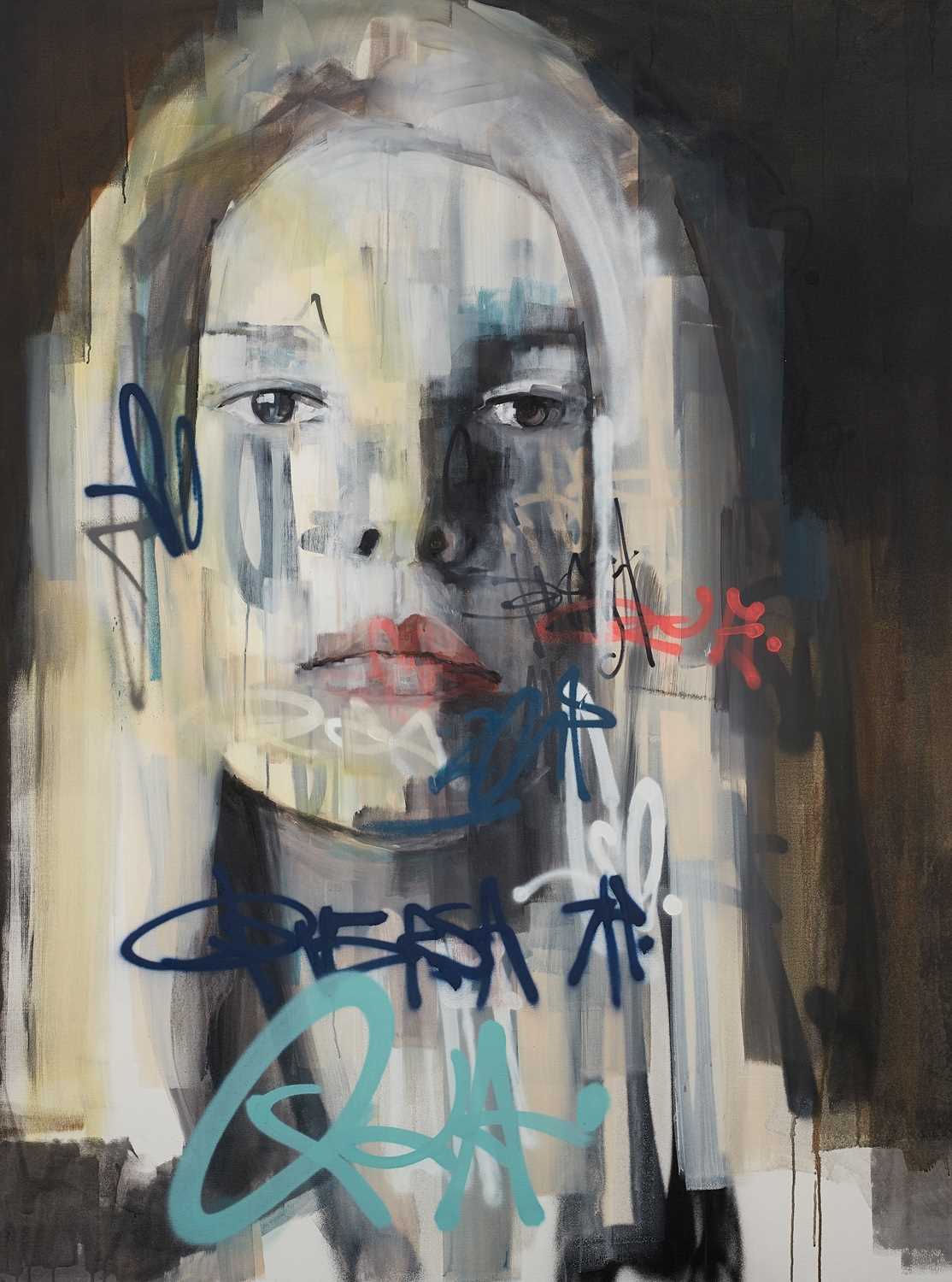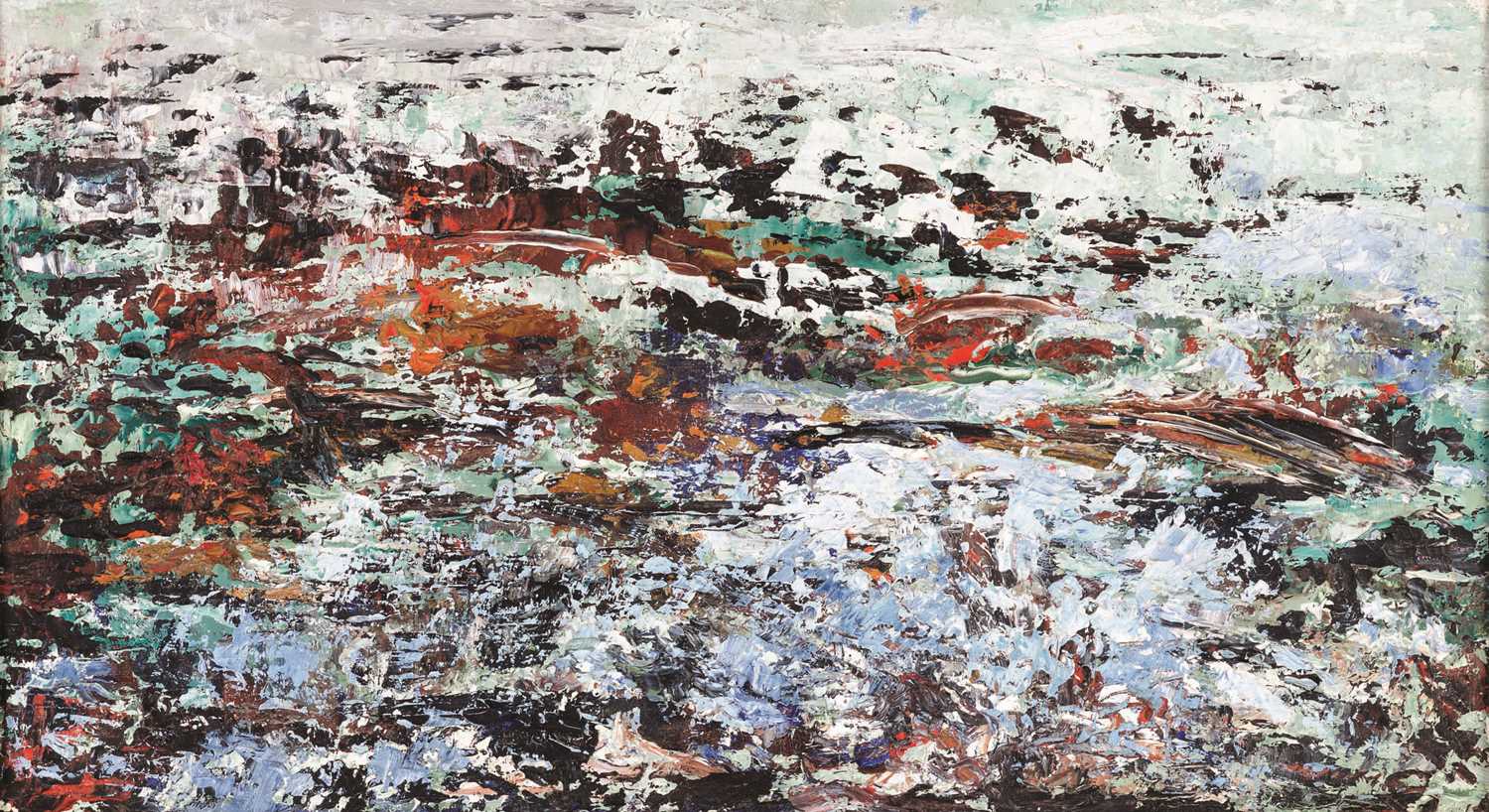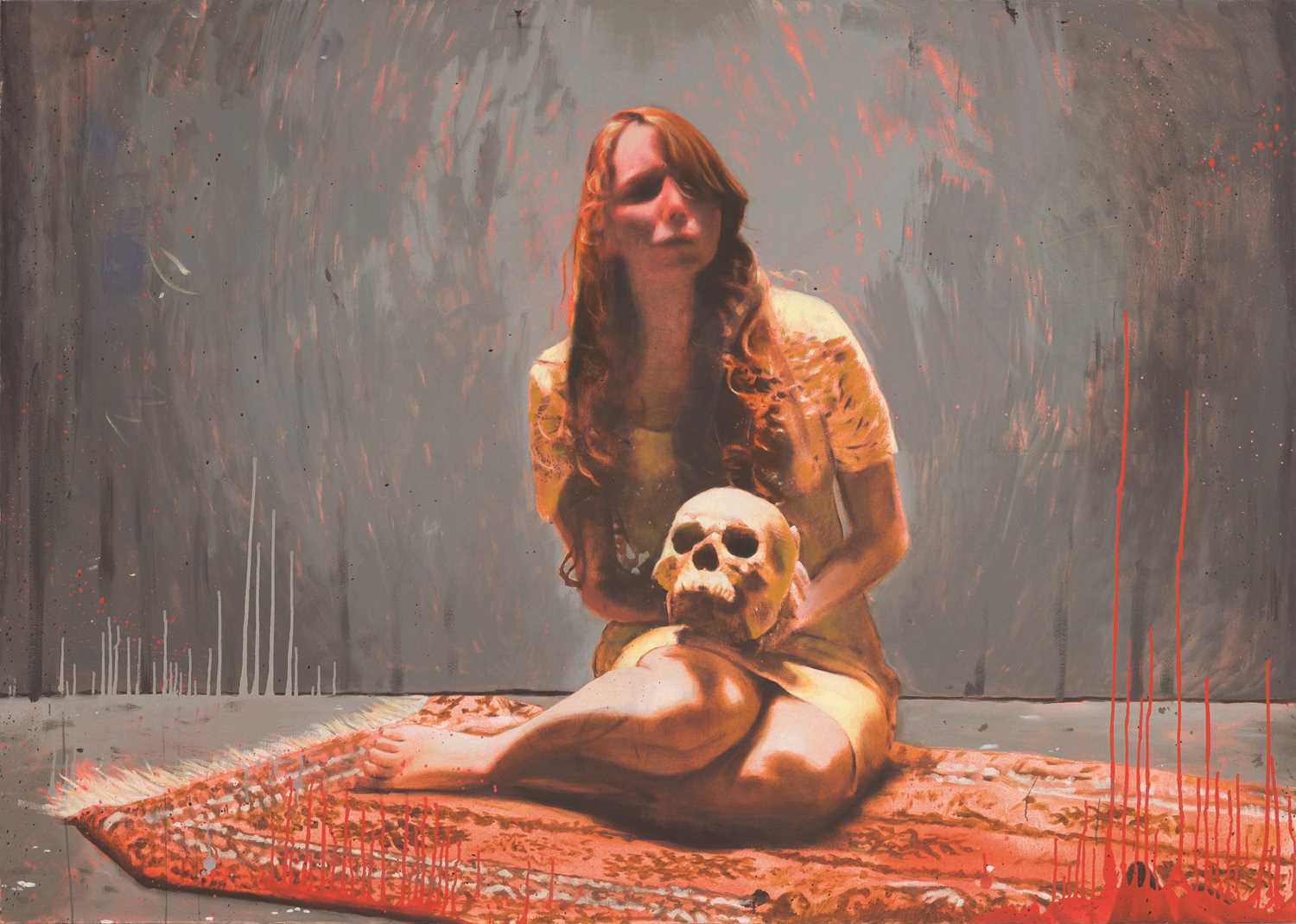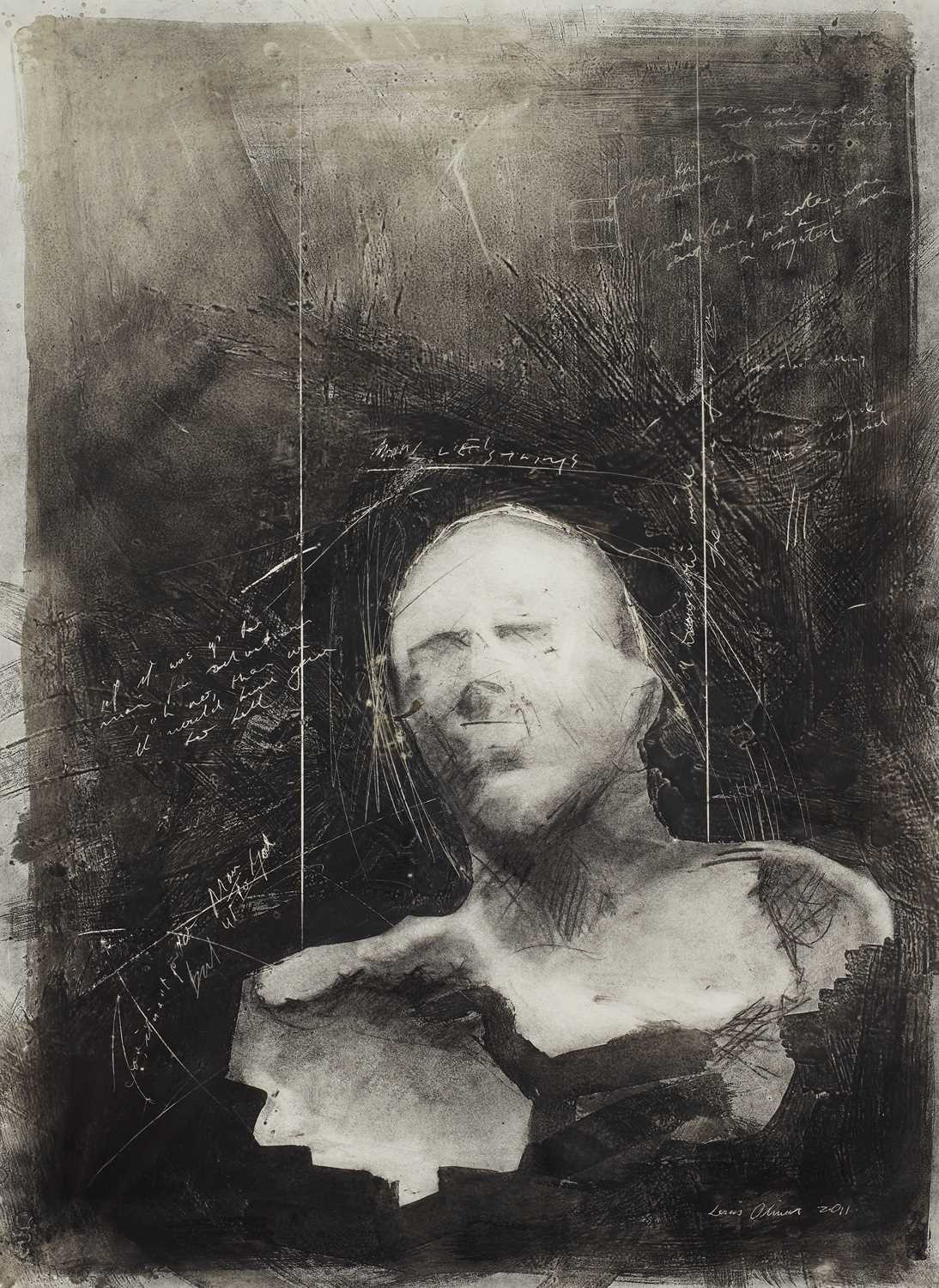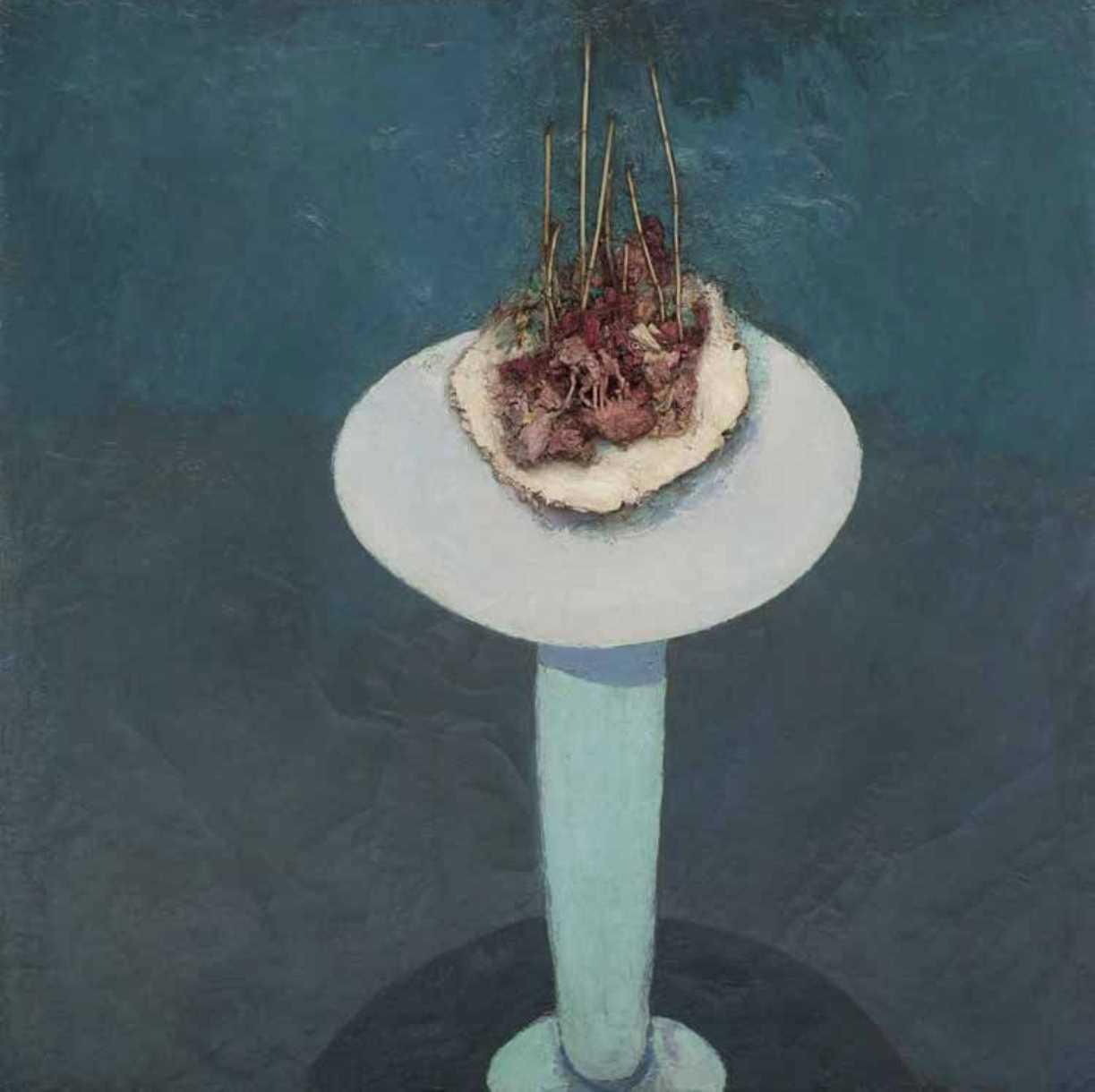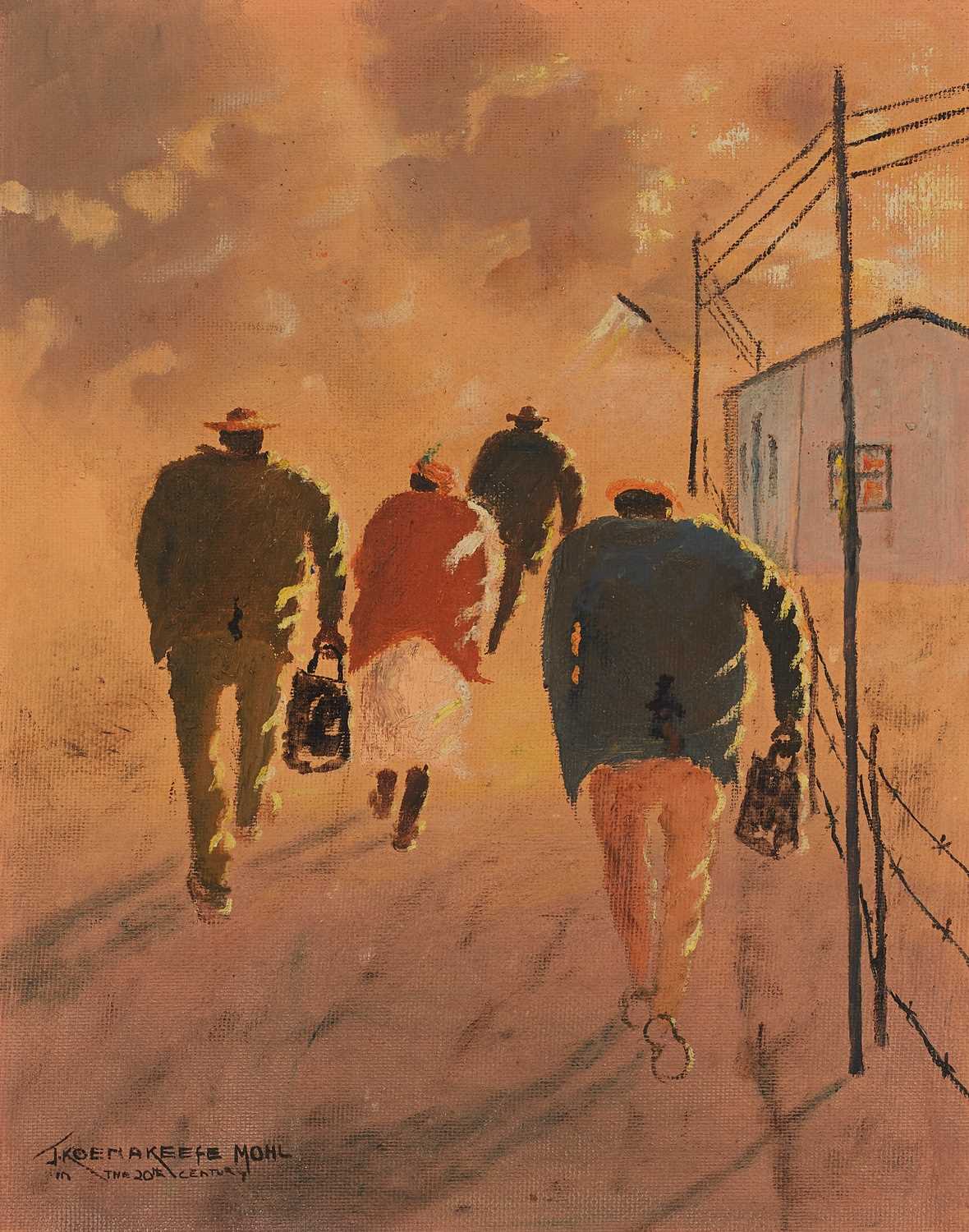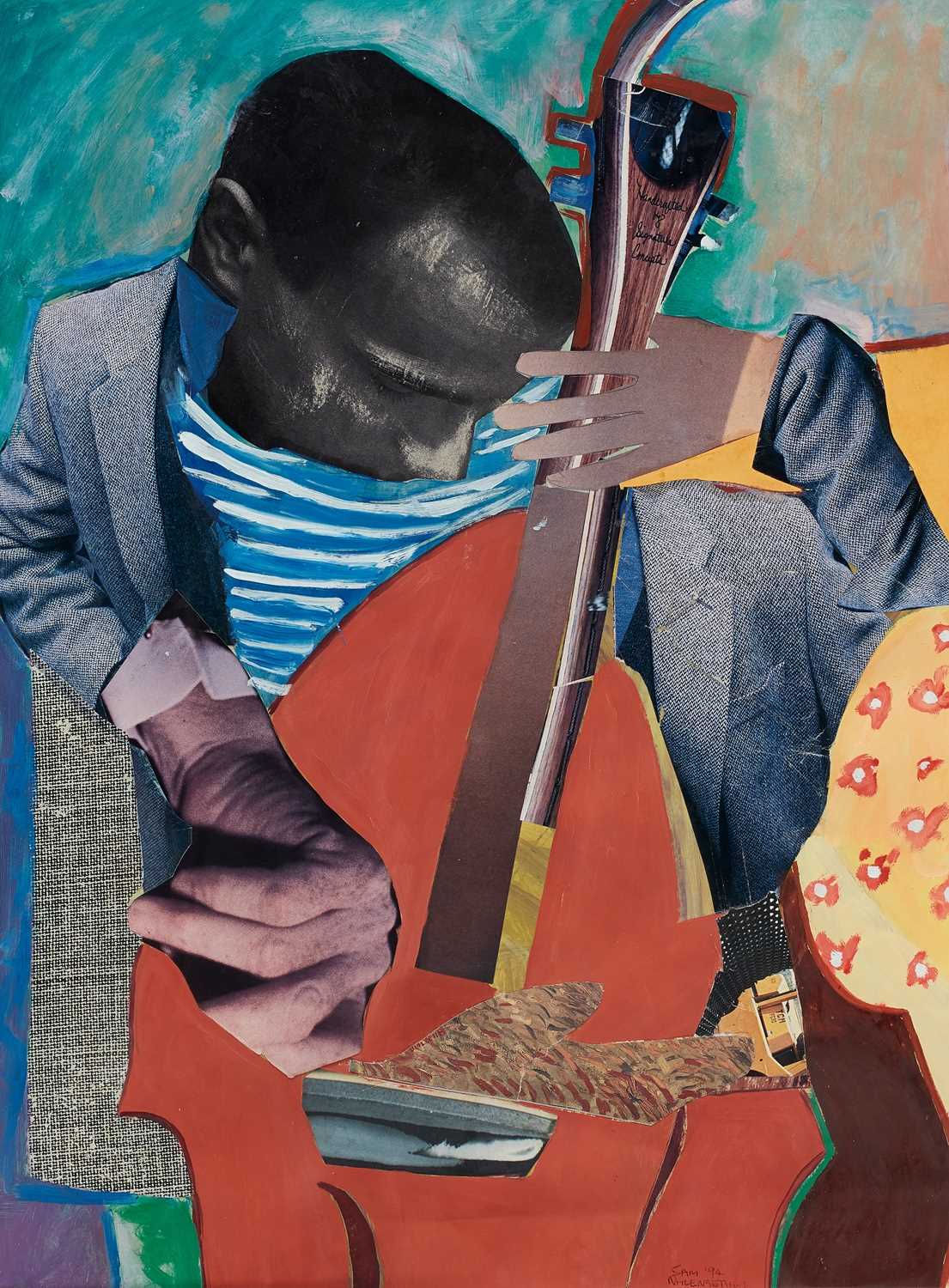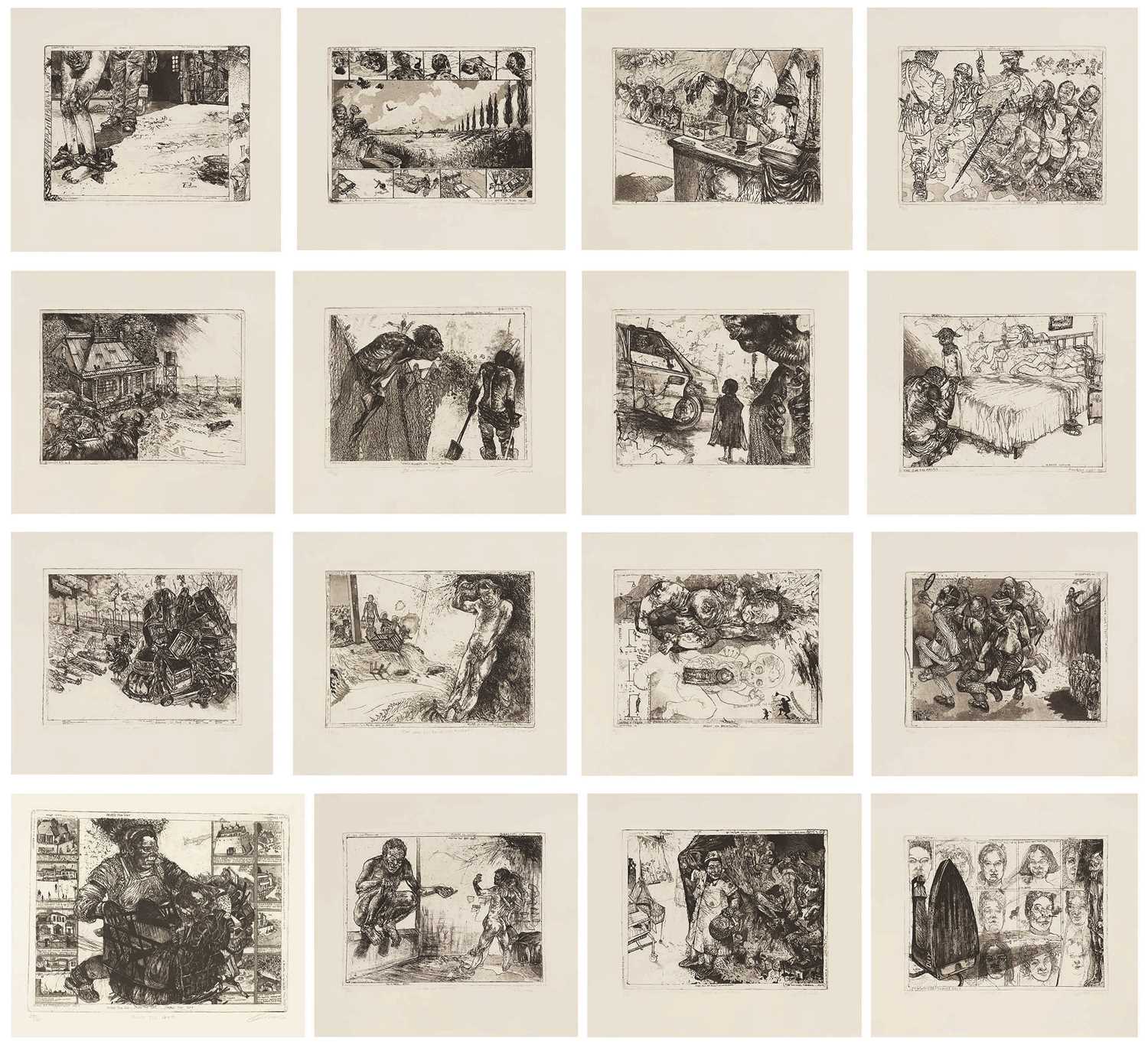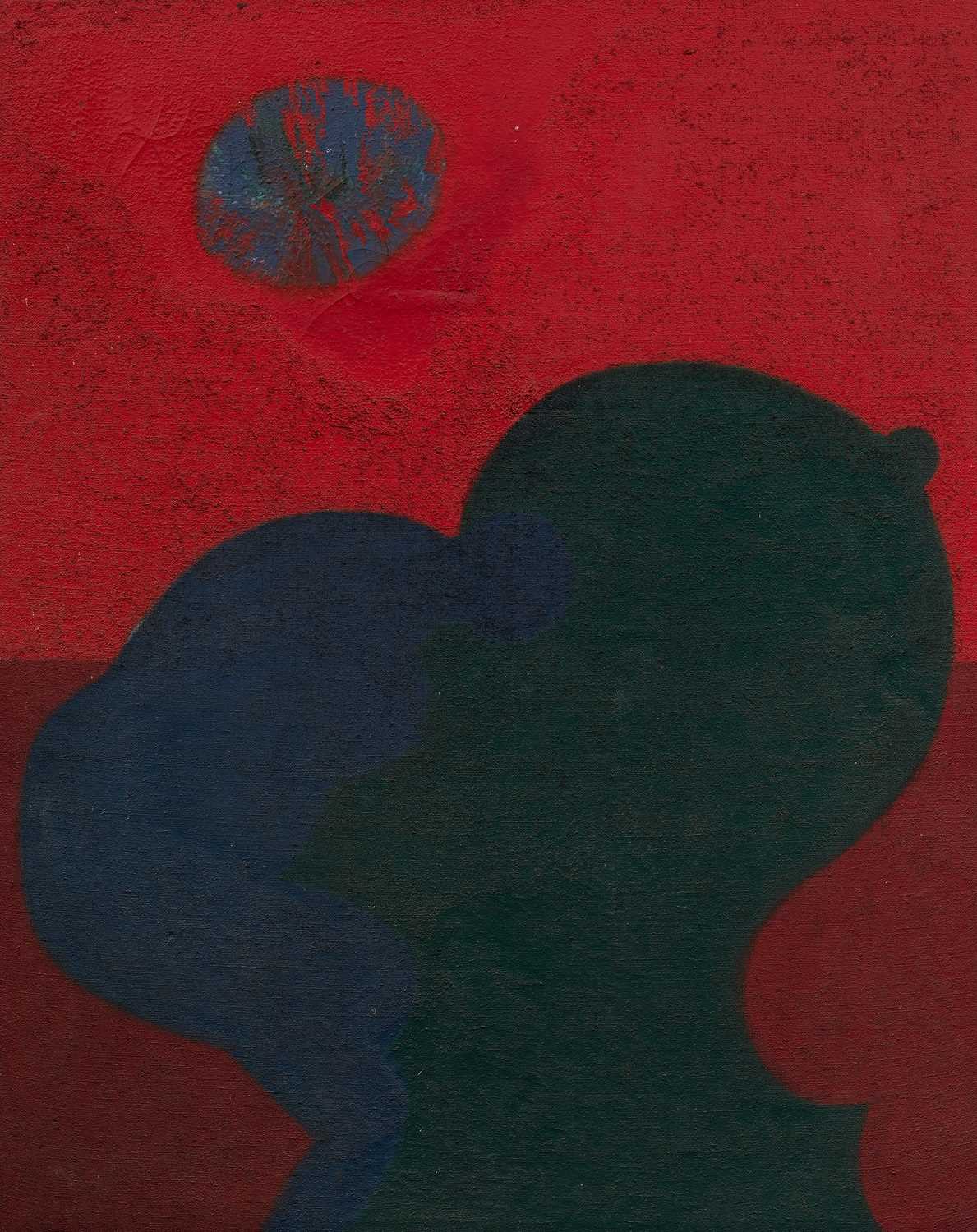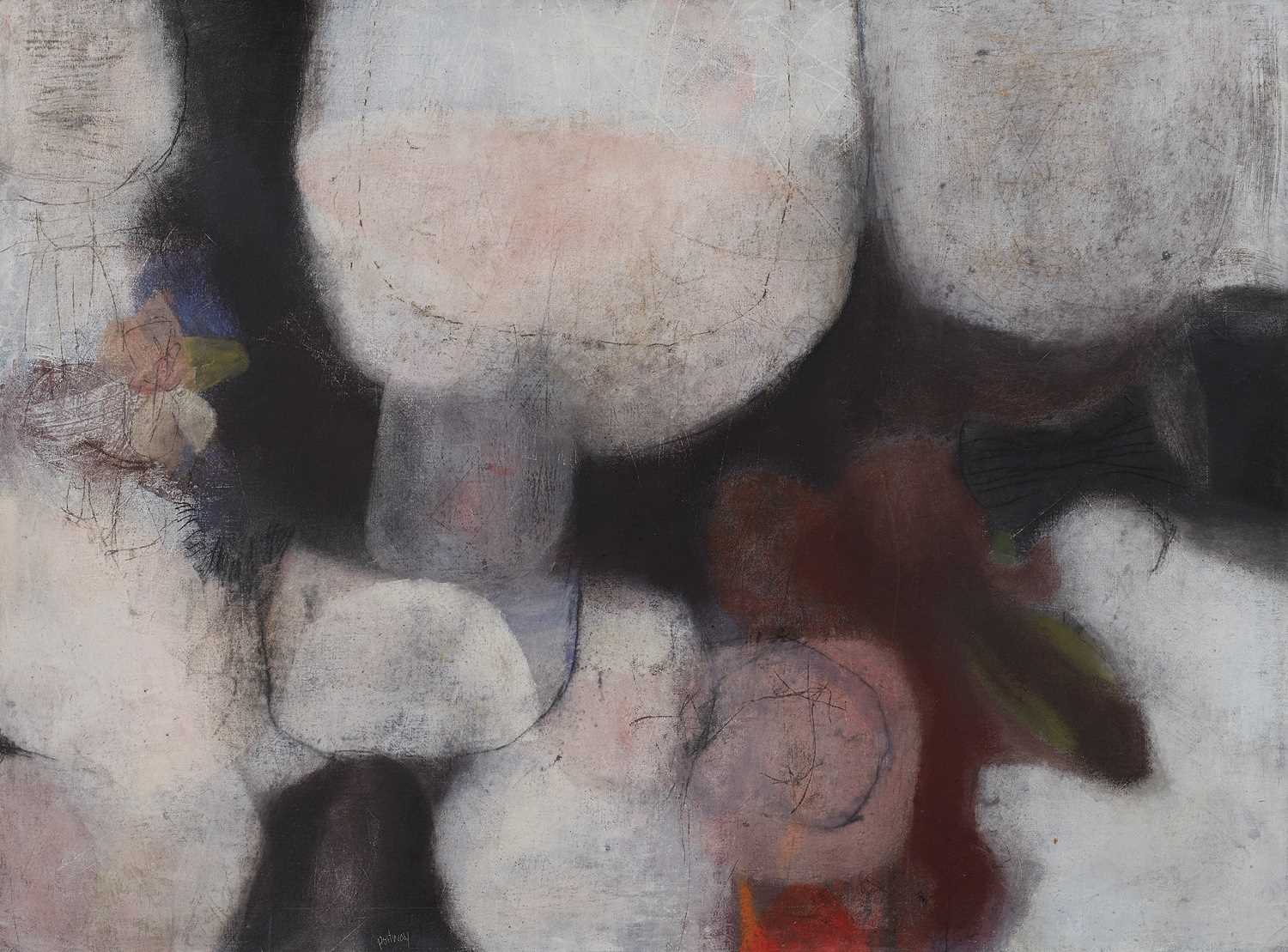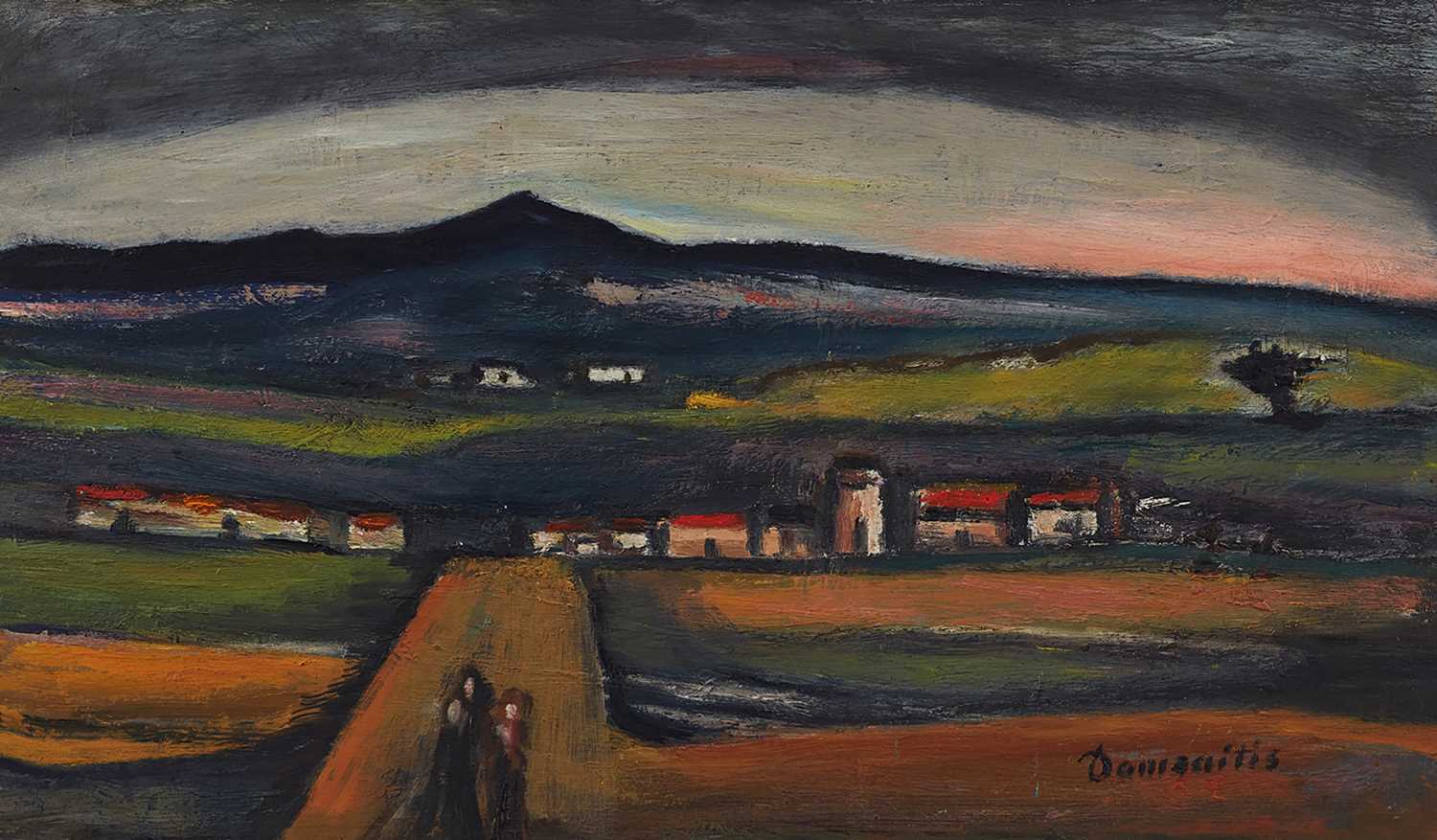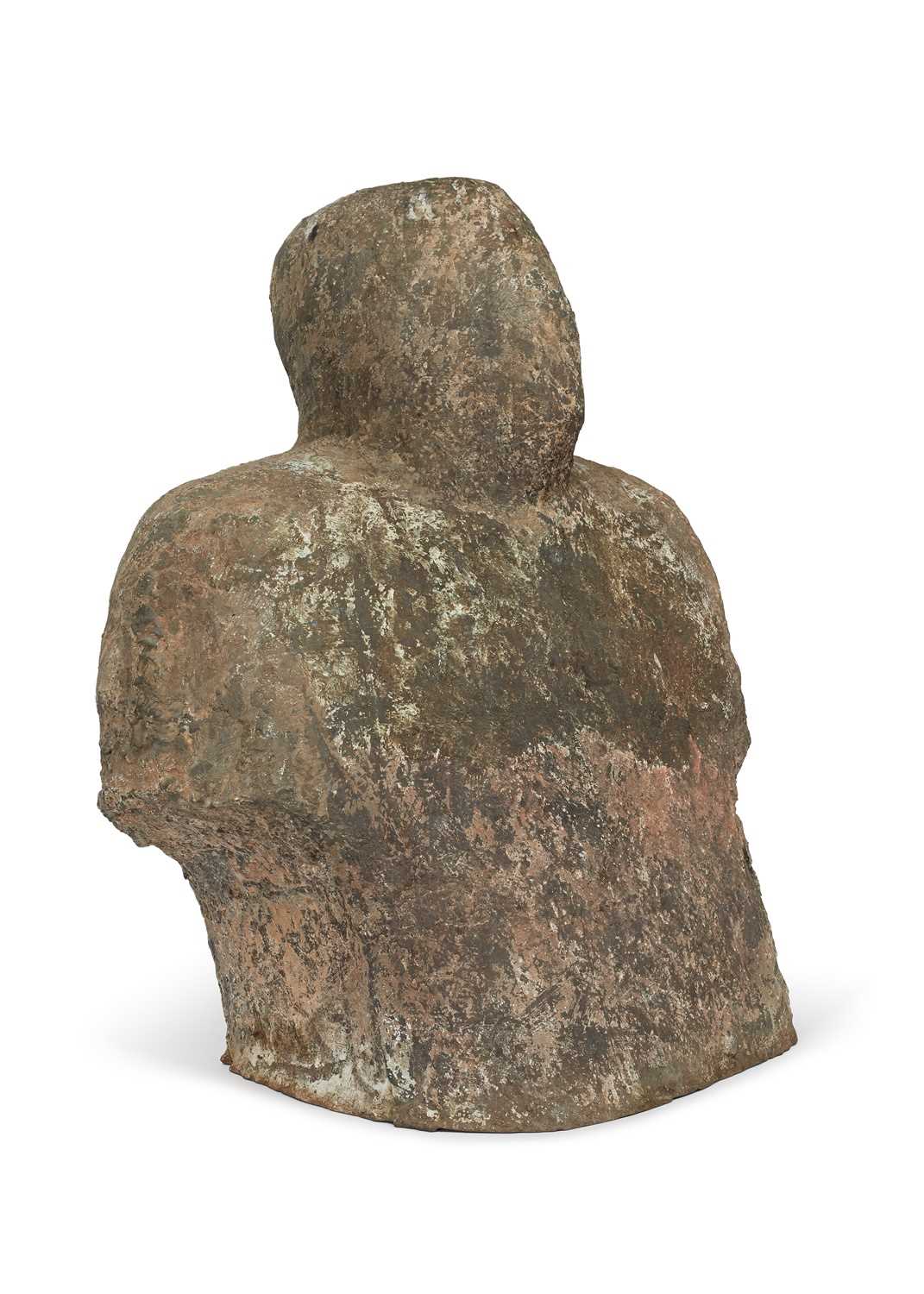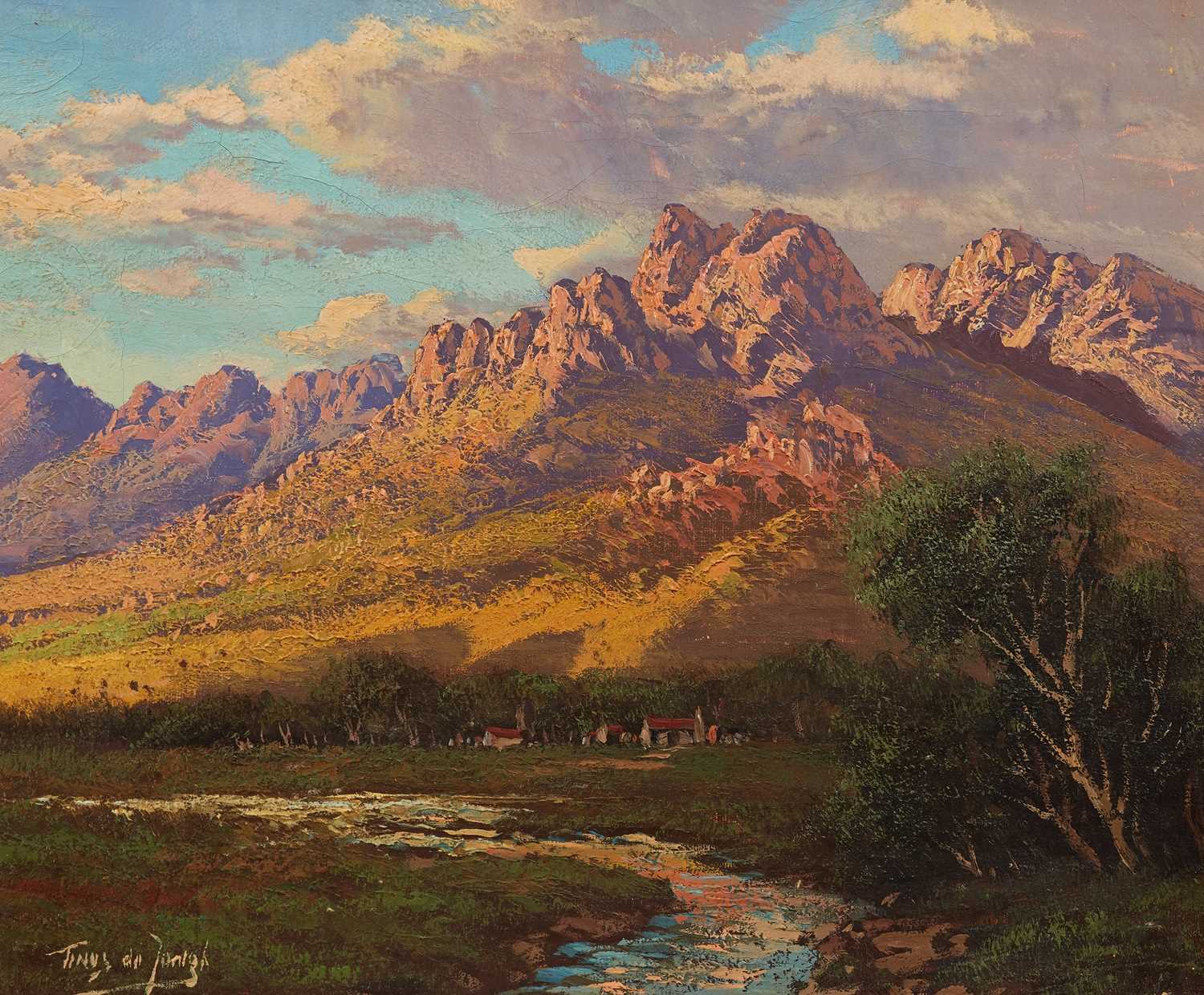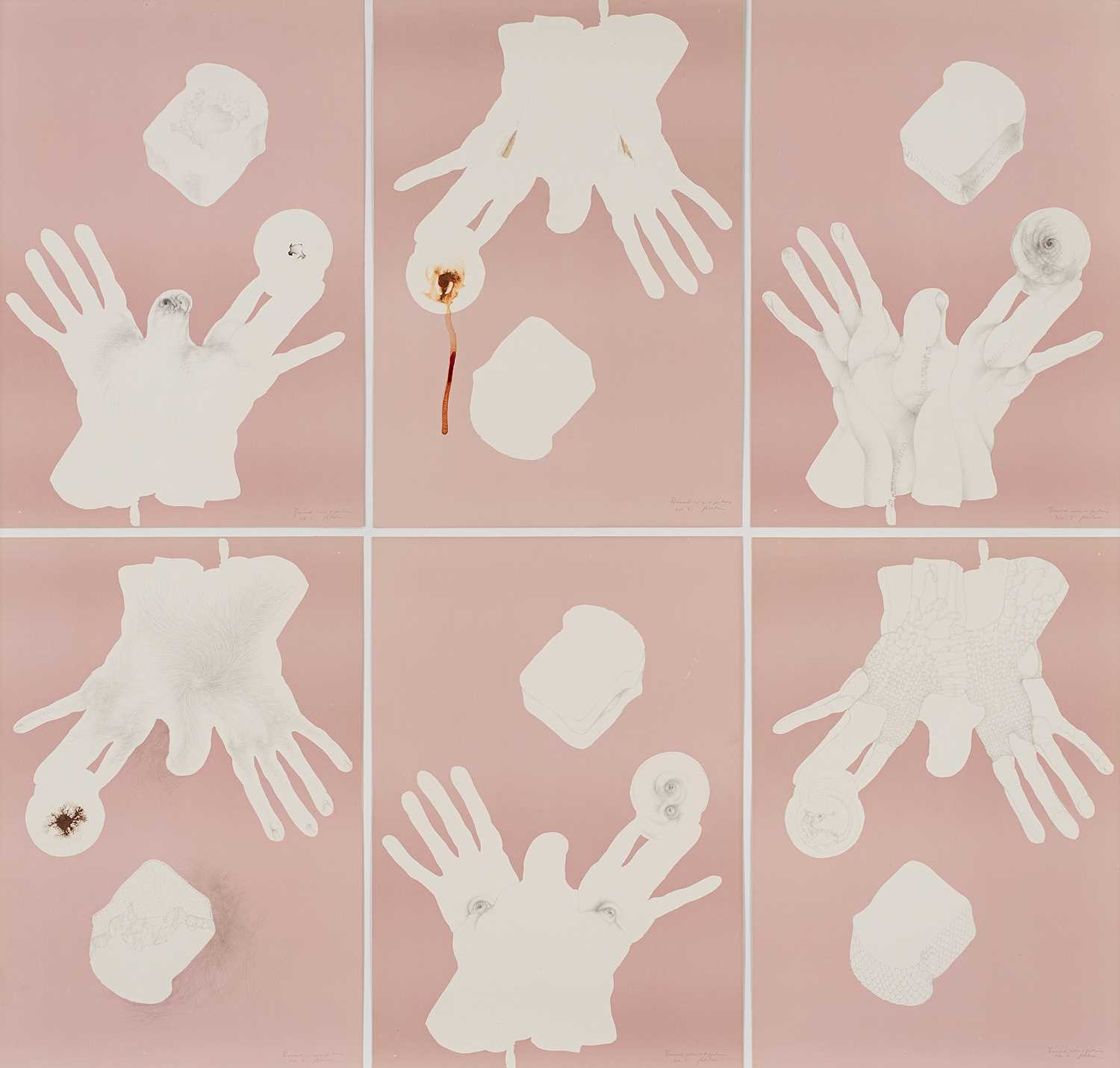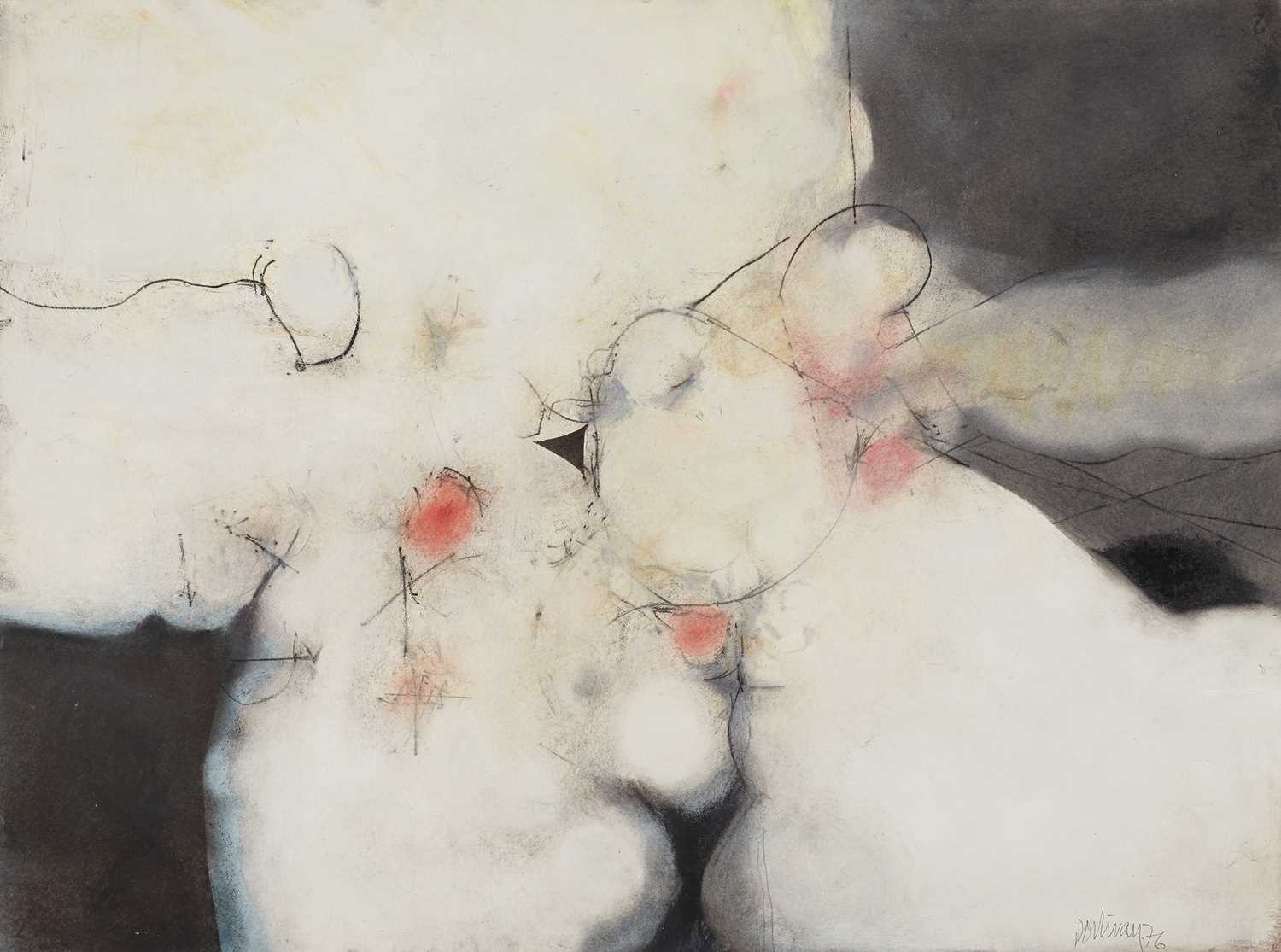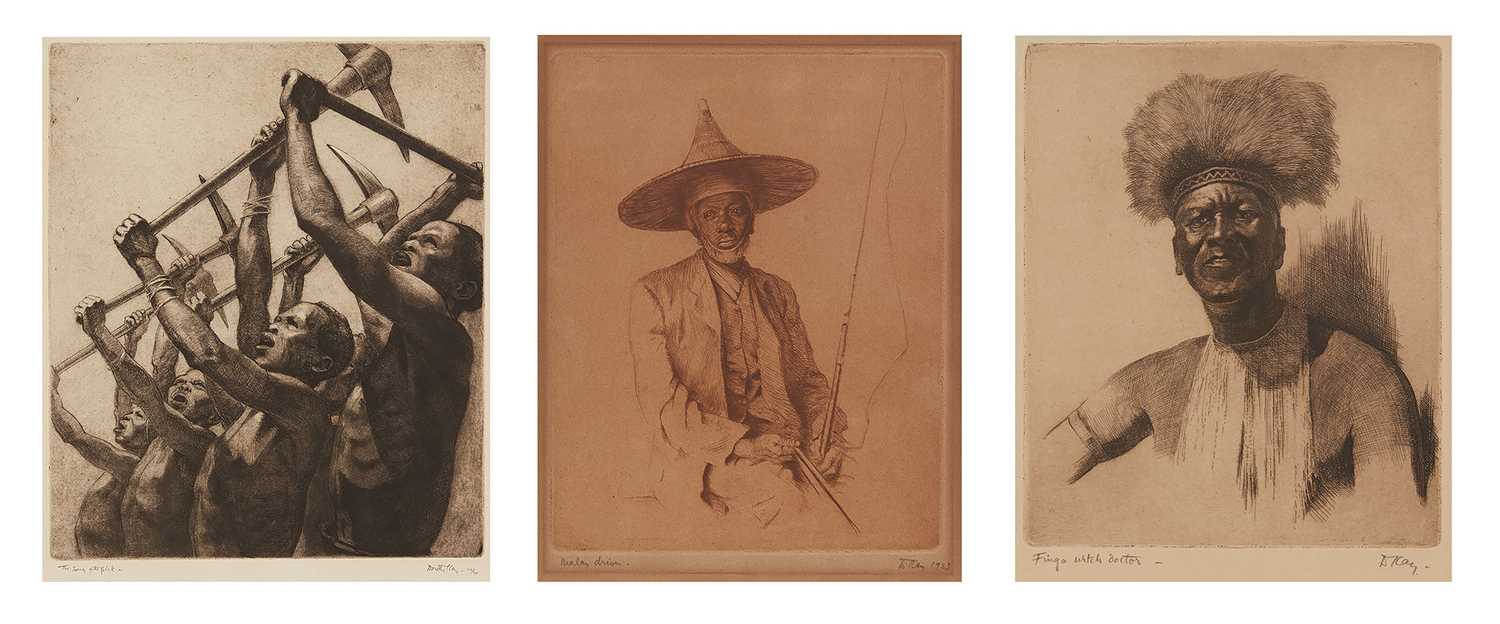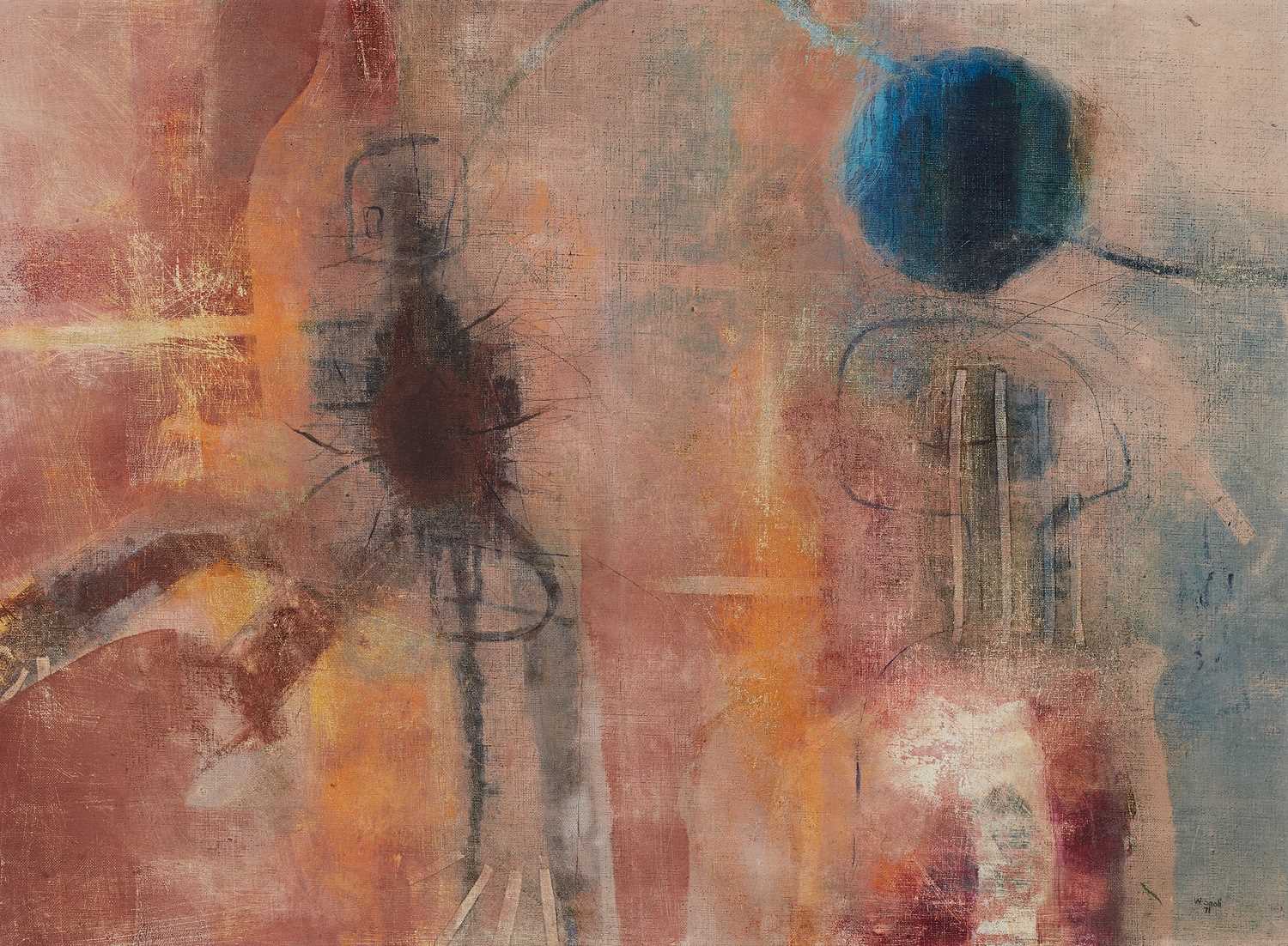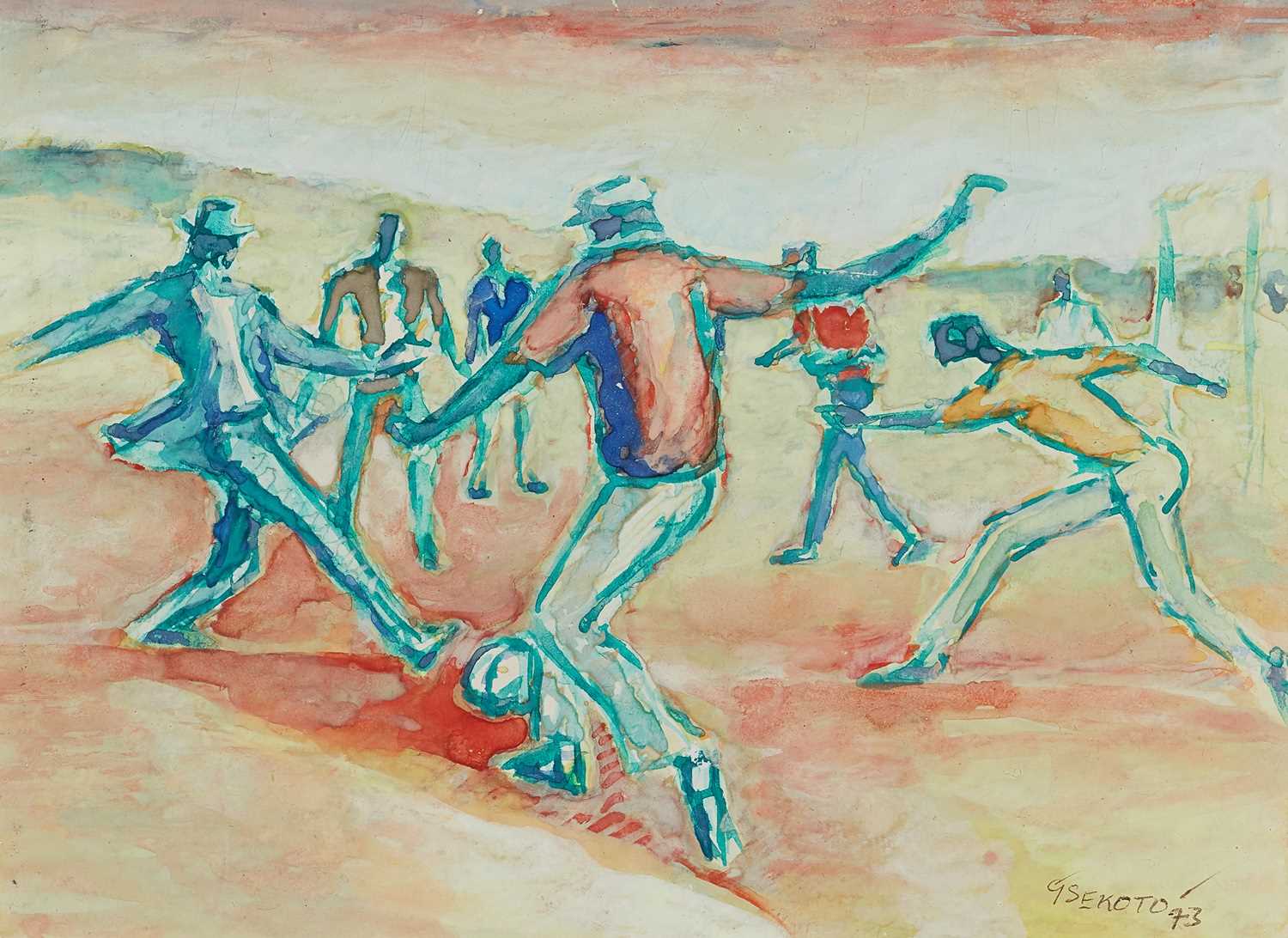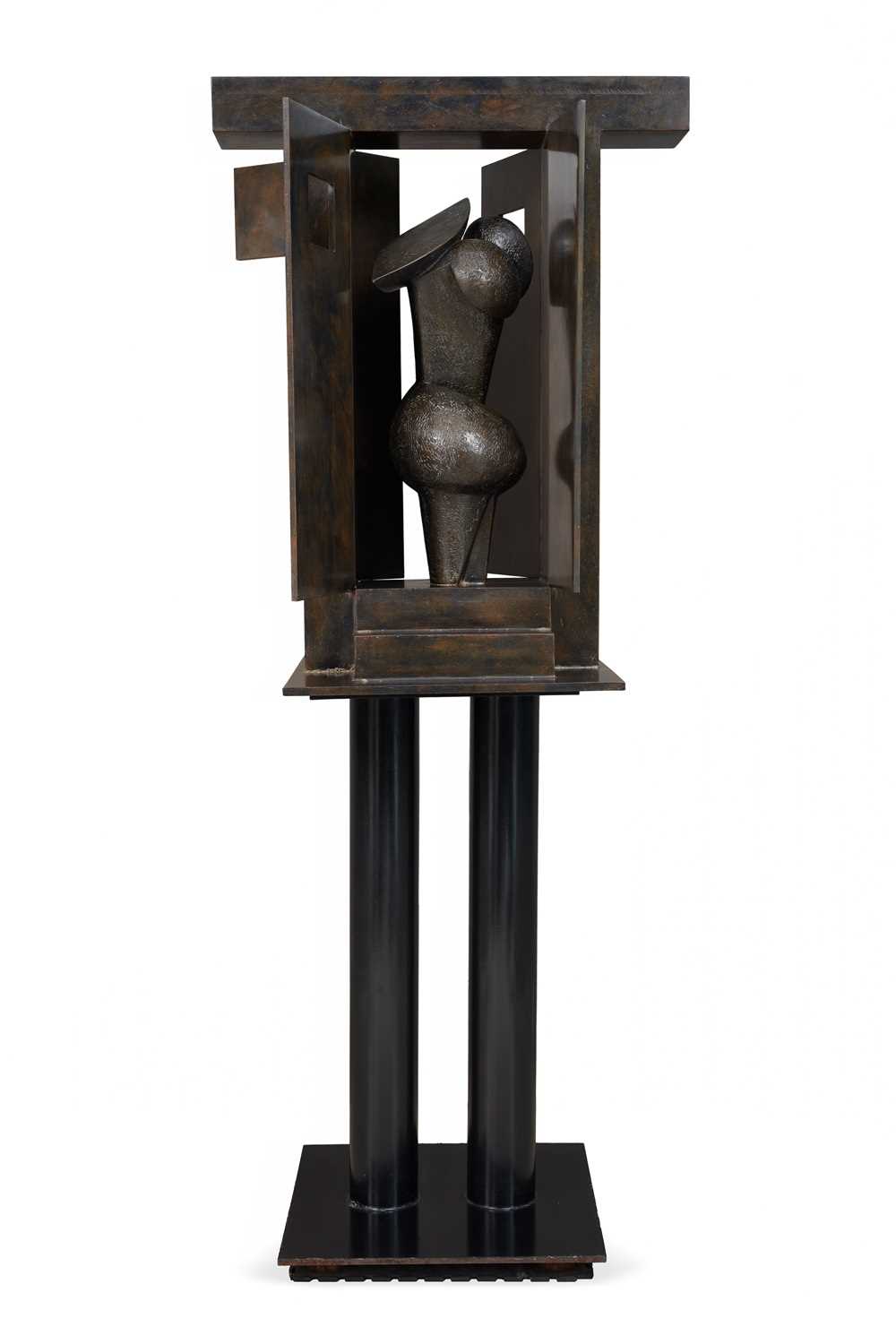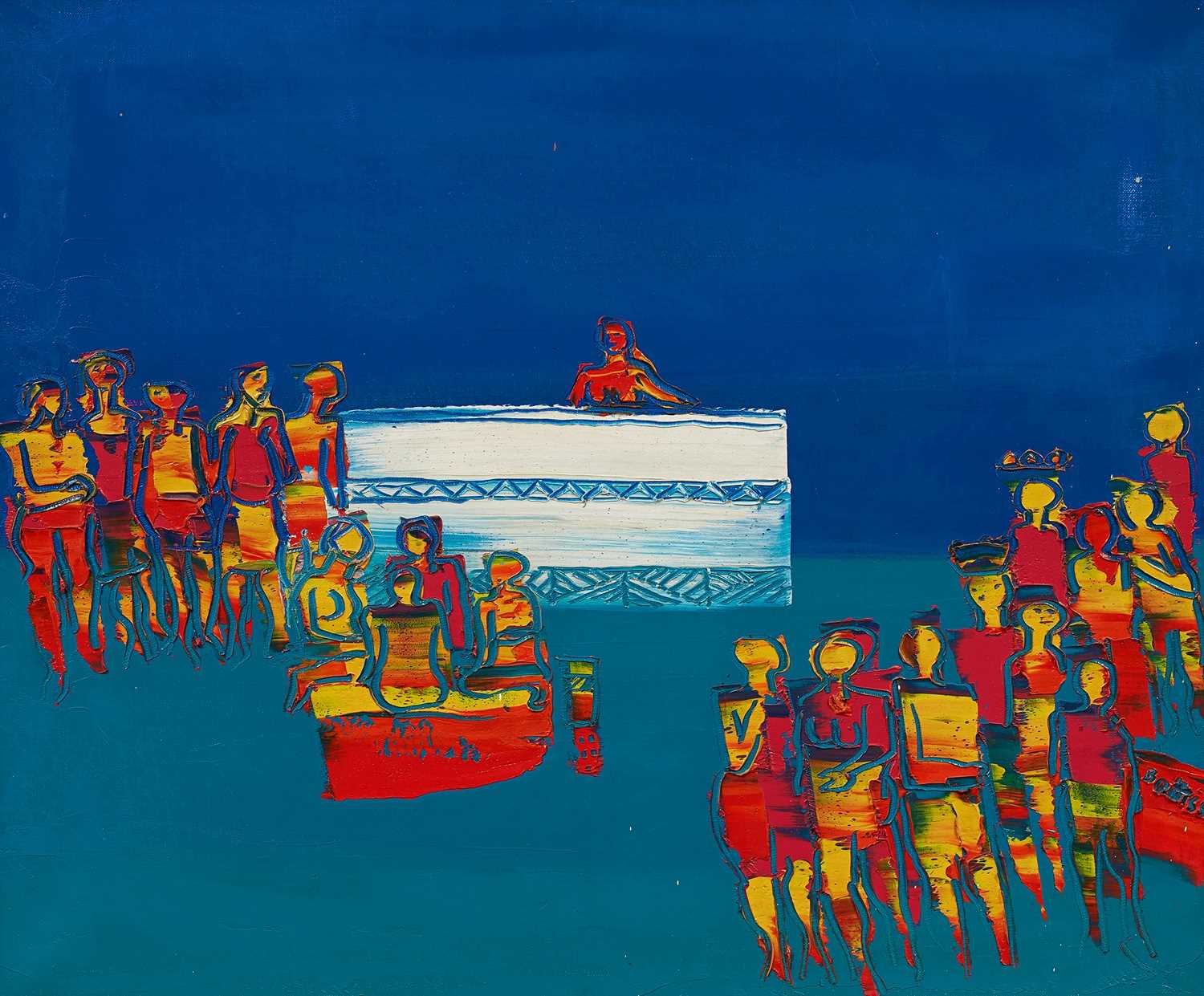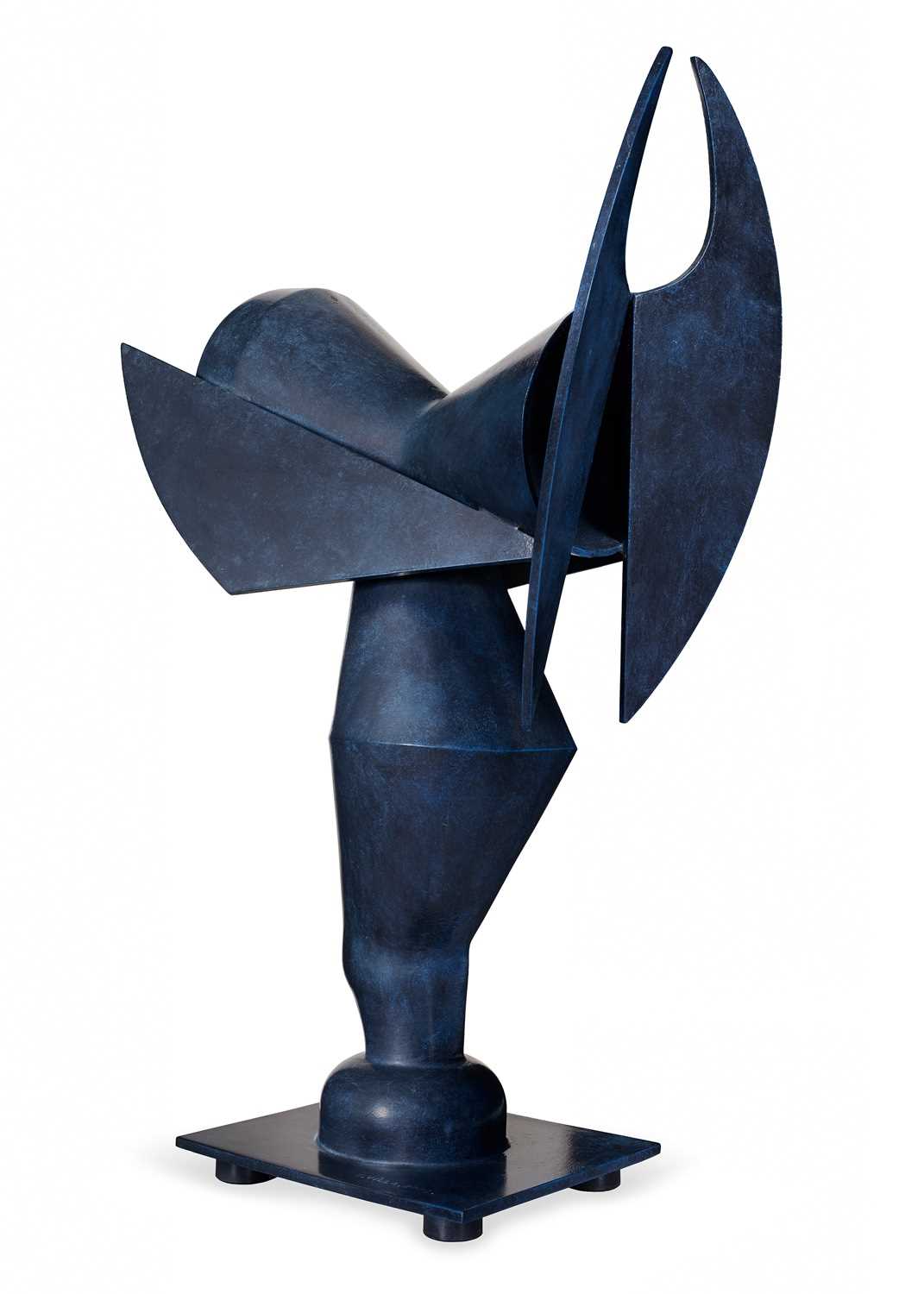28th Oct, 2018 8:30
Historic, Modern and Contemporary Art

73
William Kentridge,Drawing from Stereoscope (Double page, Soho in two rooms)
Drawing from Stereoscope (Double page, Soho in two rooms)
charcoal and pastel on paper
Artwork date: 1999
Signature details: signed
Exhibited: Goodman Gallery, Johannesburg, Stereoscope, 16 October to 20 November 1999.
Literature: Rosenthal, M. (ed.) (2009). William Kentridge: Five Themes. San Francisco: MOMA/Norton Museum of Art/Yale University Press, illustrated on p.234.
Sold for R6,600,400
Estimated at R4,500,000 - R6,000,000
charcoal and pastel on paper
Artwork date: 1999
Signature details: signed
Exhibited: Goodman Gallery, Johannesburg, Stereoscope, 16 October to 20 November 1999.
Literature: Rosenthal, M. (ed.) (2009). William Kentridge: Five Themes. San Francisco: MOMA/Norton Museum of Art/Yale University Press, illustrated on p.234.
(1)
120 x 160 cm
Notes:
This drawing from Stereoscope is one of the largest of 65 drawings that Kentridge used to make the 8 minute and 22 second animated film that was first shown, together with a selection of drawings, at the Museum of Modern Art, New York, in April 1999. Stereoscope, like Kentridge’s other ‘Drawings for Projection’, was made in stop-frame animation (that the artist called “stone-age film-making”) in which a drawing would be filmed for a few frames, altered by tiny additions and/or erasures, filmed again until a sense of movement was achieved and replaced by another drawing in which the process was repeated. The technique is characterised by both rough, seemingly provisional marks and vestiges of erased marks that contribute to the resonance of each drawing. In the year in which he made this film, Kentridge said of his method:I believe that in the indeterminacy of drawing, the contingent way that images arrive in the work, lies some kind of model of how we live our lives. The activity of drawing is a way of trying to understand who we are and how we operate in the world. It is in the strangeness of the activity itself that can be detected judgement, ethics and morality.[i]
In the present double drawing, the two forms of both Soho Eckstein, the protagonist of the film, and the room in which he is set, are summarily defined. Moreover, Soho, on the left side, shows traces of arm movements as, in the animation, he has finished reading a letter. The space of both rooms is traversed by the ghosts of blue pastel lines that, in earlier versions of the drawing, had represented frenetic lines of telephonic and other forms of communication invading Soho’s world.
The stereoscope is a nineteenth-century optical instrument that approximates binocular vision by presenting each eye with a slightly different view of the same two-dimensional scene that the viewer’s brain then reads as a unitary three-dimensional scene. As a mechanical device, the stereoscope relates to Kentridge’s fascination with instruments – optical, cinematic and medical – that present realities that are obviously partial but, arguably, with one no less real than any other. In Stereoscope, however, Kentridge reverses the process. Instead of combining two images into one, he uses the split screen to represent the two sides of Soho Eckstein’s conflicted self – the manic businessman and the remorseful man wanting to retire from the world. In the film, scenes of civic strife compound the chaos of Soho’s life.
As Matthew Kentridge has written, in the early ‘Drawings for Projection’, Soho was “the embodiment of wealth and greed, arch-capitalist in his privileged world, fat to bursting on the proceeds of exploitation”.[ii] This world is represented in the chaos of communication systems, manic numbers, and various forms of interpersonal abuse that invade Soho’s room on the left. From around the time of The History of the Main Complaint of 1996, however, Soho began to express remorse for his role in an unjust system and attempted to withdraw from this world: this space is represented on the right of the drawing. Stereoscope was made at the time of the Truth and Reconciliation Commission that dealt mainly with political crimes under Apartheid but paved the way for big business to acknowledge complicity and guilt. All Kentridge’s films, however, have an autobiographical element. At the time of Stereoscope, apparently, he felt that his “life was much too complicated” with exhibitions and theatre and opera projects all over the world, and he longed for an alternative existence of “extreme simplicity and control”.[iii] At the same time, Kentridge knew that neither state was desirable or feasible in itself.[iv] Thus, for the artist, Stereoscope expressed the hope for a balance or resolution between these competing states of life.
The present drawing represents the setting of the stage, the time before Soho’s world is invaded, on the left side, and his struggles to protect his integrity, on the right. In the context of the film, with its frenzy and violence, this drawing represents the calm before the storm – a moment of possibility and contemplation – a moment also, paradoxically, of resolution even before the conflict begins.
James Sey and Michael Godby
Sources:
‘Carolyn Christov-Bakargiev in Conversation with William Kentridge’ in Dan Cameron, Carolyn Christov-Bakargiev and J.M. Coetzee. (1999). William Kentridge. London: Phaidon. p.35.
Matthew Kentridge. (2015). The Soho Chronicles: 10 Films by William Kentridge, Calcutta: Seagull Books. p.57.
William Kentridge and Angela Breidbach. (2006). William Kentridge: Thinking Aloud; Conversations with Angela Breidbach, Johannesburg: David Krut Publishing. p.80
William Kentridge and Angela Breidbach. (2006). William Kentridge: Thinking Aloud; Conversations with Angela Breidbach, Johannesburg: David Krut Publishing. p. 74.
You can place an absentee bid through our website - please sign in to your account on our website to proceed.
In the My Account tab you can also enter telephone bids, or email bids@aspireart.net to log telephone/absentee bids.
Join us on the day of the auction to follow and bid in real-time.
The auction will be live-streamed with an audio-visual feed.
Auction: Historic, Modern and Contemporary Art, 28th Oct, 2018
Aspire Art Auctions brought a significant double-header of top lot leads to this sale.
Stellar results were achieved for internationally prominent William Kentridge and Alexis Preller, one of South Africa’s most respected and collectable modern artists. Collectors were attracted to Kentridge’s remarkable, Drawing from Stereoscope (Double page, Soho in two rooms) (1999), which sold for R6 600 400, while Preller’s Adam (1972), sold for a world record at R9 104 000. Modern offerings also included works by Peter Clarke, Kenneth Bakker, and Douglas Portway, while the contemporary segment included Moshekwa Langa, Penny Siopis, Simon Stone, Clive van den Berg, and Georgina Gratrix, amongst others.
HIGHLIGHTS
IMPORTANT NOTICE:
Logistics
While we endeavour to assist our Clients as much as possible, we require artwork(s) to be delivered and/or collected from our premises by the Client. In instances where a Client is unable to deliver or collect artwork(s), Aspire staff is available to assist in this process by outsourcing the services to one of our preferred Service Providers. The cost for this will be for the Client’s account, with an additional Handling Fee of 15% charged on top of the Service Provider’s invoice.
Aspire Art provides inter-company transfer services for its Clients between Johannesburg and Cape Town branches. These are based on the size of the artwork(s), and charged as follows:
Small (≤60x90x10 cm): R480
Medium (≤90x120x15 cm): R960
Large (≤120x150x20 cm): R1,440
Over-size: Special quote
Should artwork(s) be collected or delivered to/from Clients by Aspire Art directly, the following charges will apply:
Collection/delivery ≤20km: R400
Collection/delivery 20km>R800≤50km
Collection/delivery >50km: Special quote
Packaging
A flat fee of R100 will be added to the invoice for packaging of unframed works on paper.
International Collectors Shipping Package
For collectors based outside South Africa who purchase regularly from Aspire Art’s auctions in South Africa, it does not make sense to ship artworks individually or per auction and pay shipping every time you buy another work. Consequently, we have developed a special collectors’ shipping package to assist in reducing shipping costs and the constant demands of logistics arrangements.
For buyers from outside South Africa, we will keep the artworks you have purchased in storage during the year and then ship all the works you have acquired during the year together, so the shipping costs are reduced. At the end of the annual period, we will source various quotes to get you the best price, and ship all your artworks to your desired address at once.
Aspire Art will arrange suitable storage during, and cost-effective shipping at the end, of the annual period.
Collections
Collections are by appointment, with 24-hours’ notice
Clients are requested to contact the relevant office and inform Aspire Art of which artwork(s) they would like to collect, and allow a 24-hour window for Aspire Art’s logistics department to retrieve the artwork(s) and prepare them for collection.
Handling Fee
Aspire Art charges a 15% Handling Fee on all Logistics, Framing, Restoration and Conservation arranged by Aspire.
